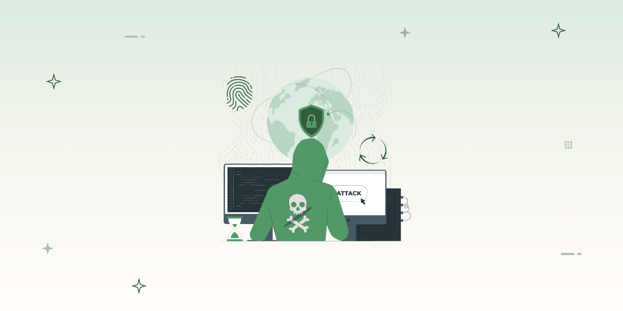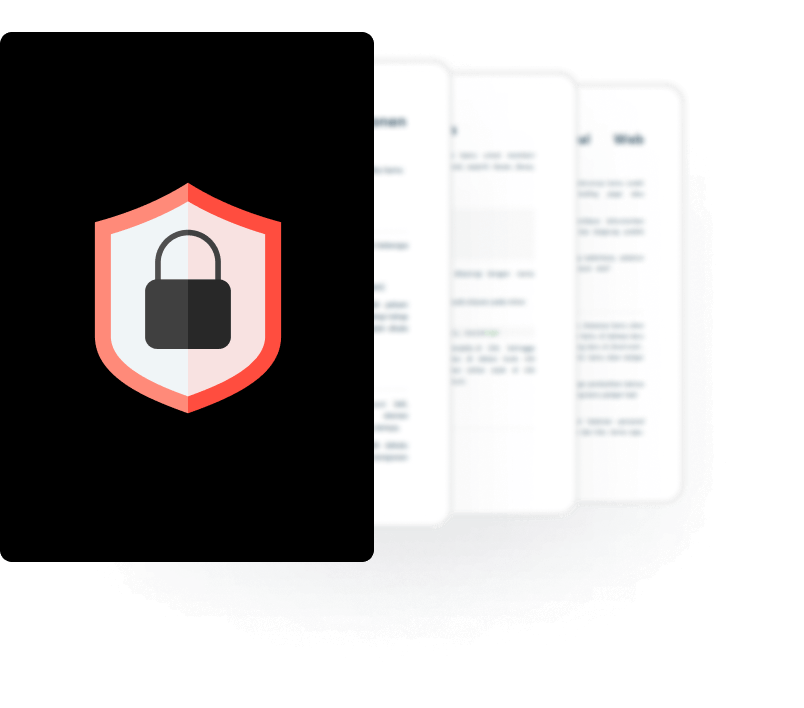
BLOG

BLOG
As per the Varonis Global Data Risk Report for 2021, 13% of all files and folders and 15% of sensitive files in an organization are open to everyone. Further, when it comes to SMEs, only 16% have done thorough cybersecurity posture reviews, and that too after encountering an attack.
While organizations worldwide are little or not prepared for cybersecurity, cyberattacks are becoming increasingly sophisticated. Hackers are assuming more aggressive stances, with more than 30,000 websites getting hacked daily in 2024.
Even the mobile app ecosystem is highly vulnerable to malicious activities, and around 24 thousand mobile apps are blocked daily for being malicious.
Hence, a reliable, robust, and thorough cybersecurity strategy and a disaster recovery plan to contain or overcome any cyberattack are two major must-haves for businesses of all sizes and types.
Below, we discuss the cybersecurity disaster recovery plan, explore its goals, and share key considerations for creating a foolproof plan.
Let us get started with a detailed overview of the term itself.
Also referred to as DRP, a disaster recovery plan is a step-wise process for resuming business operations and processes after an organizational disaster. A cybersecurity disaster can be of multiple types, such as
So, the primary objective of a cybersecurity disaster recovery plan is to protect organizational data and assets after a security mishap. You can also understand it as a stealthy approach to collecting and preserving evidence and analyzing the root causes of the security incident.
However, this is not the only task, as you have to ensure many other things once a security issue is identified, such as:
These tasks are also the goals of every disaster recovery plan. In the sections ahead, we discuss more such goals in detail.
Finally, you must manage, monitor, update, and track the cybersecurity disaster recovery plan to maintain a robust security posture.
A simple visual representation of the common steps and processes involved in a cybersecurity disaster recovery plan is shown below:

Now that we understand a cybersecurity disaster recovery plan let's discuss its various goals.
Let's face it—bad things can happen to any business. That's why having a disaster recovery plan is super important!
By having one ready, you're not just hoping for the best - you're preparing for the worst while expecting the best! Think of it as a safety net that catches you when things go wrong.
Here's why you need one:
When a disaster strikes, every minute of downtime costs money. A disaster recovery plan ensures systems are quickly restored, minimizing operational disruptions and revenue loss. It acts as a safety net, ensuring your business can bounce back swiftly.
Data is often an organization's lifeblood. A DRP ensures that critical data—customer information, financial records, and intellectual property—is securely backed up and retrievable. This reduces the risk of losing valuable data to cyberattacks, hardware failure, or natural disasters. So, a disaster recovery plan shows that you take your customer's privacy seriously.
A comprehensive disaster recovery plan doesn’t just focus on IT systems—it’s about running your entire business. From communications to customer service, a DRP ensures essential functions continue during a crisis, preserving your organization’s reputation and trust.
Many industries have legal or regulatory requirements for data security and continuity. A solid DRP helps you stay compliant with these standards, reducing the risk of penalties and reputational damage.
Sure, creating a disaster recovery plan takes some time and money. But guess what? It costs way less than fixing things after a cyber attack without a plan. It's like having insurance - you hope you never need it, but you're glad it's there when you do!
Before discussing the goals of a cybersecurity recovery plan, it is essential to understand that disaster recovery is disjoint from business continuity. While business continuity also becomes important and requires proper remediation after a cybersecurity disaster, disaster recovery focuses on the disaster's IT and management aspects.
So, the goals of a cybersecurity disaster recovery plan are built keeping in mind the effects and recurrence of such disasters.
While we have outlined some common goals of a disaster recovery plan, you must note that these objectives and activities change across the businesses and operation ecosystems.
Some specific industries, such as finance and healthcare, might require more thorough and complex activities and goals. On the other hand, SMEs working in non-vulnerable sectors, such as lifestyle blogs, coaching, etc., don't require technical goals.
Next, we discuss 5 critical considerations for creating a robust, reliable, and thorough cybersecurity disaster recovery plan.
Good Read: 7 Best Practices for Effective Third-Party Cyber Risk Management

Regardless of the scale and type of business organization you have, the following five key considerations are essential for your cybersecurity disaster recovery plan.
Recovery Time Objective (RTO) is the maximum time you consider acceptable for your business system or operations to be down in light of a cybersecurity disaster. While the ideal scenario calls for waiting until all the damages of a disaster are done and no new recurrences are expected, we live in the real world!
Hence, you set an RTO as a maximum tolerable outage that your company can endure without causing significant damage to your clients, employees, customers, and asset clusters.
You need to create different RTO categories, as some business operations and processes will definitely require a longer recovery time than others.
Like a risk management plan, a cybersecurity disaster recovery plan has clear-cut personnel roles and responsibilities for every member considered relevant and reliable for disaster management and containment.
These roles and responsibilities will ensure that your team aggressively works on the solution and disaster containment activities instead of being in a state of panic or frenzy. Also, when every individual has a role assigned, task delegation ensures proper and systemic handling of the various impacts a disaster brings with itself.
Now that the task delegation is done, you need to work on your hardware and software inventory to gauge three things:
A thorough analysis of your hardware and software inventory allows you to understand the current situation and present data-backed facts to every stakeholder, such as employees, clients, and customers, with proper abstraction.
No cybersecurity disaster recovery plan is complete without a detailed outlining of various recovery procedures to follow.
Now, when you are initially compiling your cybersecurity disaster recovery plan, you don't have much historical information to rely upon, and you have to think of all the things that could go wrong!
Hence, it is an exhaustive activity that requires a thorough analysis of your security posture, business model, operations, network, etc. We recommend consulting reputed security solutions providers or cybersecurity consultants, such as Appknox, to create a highly precise and immaculate set of response procedures.
Finally, it is crucial to have a crisis communication strategy that you can follow to keep all the business stakeholders informed and on alert. Otherwise, they can get panicked or swayed by your lack of initiative and might also stop doing business with you.
Some common examples include:
Take a look at how Amazon keeps its customers pacified even during major outages, such as the infamous Amazon Prime Day:
While it is impossible to avoid risks or security disasters coming your way, creating reliable and robust plans to contain and overcome the situation is a surefire way to emerge as a winner.
Remember, a disaster recovery plan isn't just a boring document in a drawer: update, revise, and consistently improve it because technology is evolving rapidly, and so are the hackers!
So, your willingness and preparedness are the two must-haves for an infallible disaster recovery plan.
Finally, you must have the right expertise, such as Appknox, to maintain a strong security posture and ensure recovery with minimum losses every time with its impeccably robust testing and consulting offerings.
.jpg?width=50&height=50&name=10606600_10204086667262761_7381430219125488912_n%20(1).jpg)
Hackers never rest. Neither should your security!
Stay ahead of emerging threats, vulnerabilities, and best practices in mobile app security—delivered straight to your inbox.
![]() Exclusive insights. Zero fluff. Absolute security.
Exclusive insights. Zero fluff. Absolute security.
![]() Join the Appknox Security Insider Newsletter!
Join the Appknox Security Insider Newsletter!
